Minecraft is an iconic game. One of its main features is the worlds it generates. By creating cubic continents and islands, the game makes each playthrough unique with a vast diversity of biomes.
 Image: stilno.site
Image: stilno.site
Biomes are areas of the map with unique climates, flora, fauna, geography. In this article, we will provide a detailed overview of all Minecraft biomes to help players navigate this boundless cubic world.
Snowy Biomes
 Image: furman.top
Image: furman.top
Let’s begin our journey with the harsh snow, blizzards, ice, stone. The temperature here is so low that almost all moisture freezes, covering the ground with snow. Instead of rain, snowflakes fall from the sky, rivers, lakes are hidden under a permanent icy crust.
Snowy Plains and Ice Spikes
 Image: minecraftgame.ru
Image: minecraftgame.ru
Upon entering the Snowy Plains, you’ll see expanses with rare hills + trees. As you walk through the cold desert, you’ll come across lakes, rivers that haven’t yet frozen. However, no one should rush to build a home here.
Lakes tend to freeze, causing the sugar cane growing nearby to be destroyed. Agriculture is also unreliable since all crops can perish.
Snowy Plains + Ice Spikes are not the best places to settle and build an estate. Wood is scarce, and finding food is difficult. On these icy expanses, you might encounter polar bears, rabbits, but strays are not worth hunting for meat. The only salvation lies in the villages, but they are hard to find.
This biome does not have unique blocks: only dirt, packed ice, snow, and a little wood.
Snowy Taiga
 Image: fruitnice.ru
Image: fruitnice.ru
Tall pine, spruce trees on the horizon indicate that you’ve entered the Snowy Taiga. Players should be cautious, as this place is dangerous.
There is plenty of wood, sources of meat of all kinds — from rabbits to pigs — even berries are available. However, the hilly terrain will hinder construction, and the dense forest can easily swallow a traveler.
Water here freezes quickly, but the real danger comes from the inhabitants of these forests. You’ll often encounter skeletons, spiders, slimes, zombies, but their threat pales in comparison to the creeper. Pillagers also roam these woods.
There are no unique blocks, but there is more wood, grass, ferns. Let’s continue our journey.
Frozen Ocean and Deep Frozen Ocean
 Image: papik.pro
Image: papik.pro
Now, an endless purple expanse of water opens up. In places, it is covered with ice, icebergs made of snow, packed ice, and blue ice can be seen floating on the water. The underwater world is almost lifeless: there is no seaweed or kelp, and the bottom is covered with gravel.
Polar bears, strays live on the icebergs, salmon can be found beneath them. Only in the deep ocean will you encounter ruins, lava lakes.
Snowy Mountains
 Image: minecraft.fandom.com
Image: minecraft.fandom.com
Leaving the oceans behind, we see snow, ice-covered mountains on the horizon. Mountain biomes give us the chance to find new blocks — various ores for smelting, crafting: coal, iron, emerald.
At the foot of the mountains, we encounter the Mountain Grove. There is no lush greenery here, only snow, dirt, trees. Rabbits, foxes, wolves provide food for players.
 Image: minecraft.fandom.com
Image: minecraft.fandom.com
Higher up are the Snowy Slopes + Jagged Peaks. The trees are left behind, and we are surrounded by stone, snow. The only activities here are mining ores, hunting goats, rabbits for meat.
However, we must not forget that all the hostile creatures we encountered earlier are also present here.
The Frozen Peaks already pierce the clouds with their spires. This biome is similar to the previous one, but with more dangers. In addition to loose snow, there is ice here. One wrong step or pickaxe strike, and your descent will be quick, deadly.
Windswept Hills and Forests
 Image: minecraft.fandom.com
Image: minecraft.fandom.com
Passing the mountain ranges, the gamer descends lower. We find ourselves on stone hills, still high enough for the water to freeze. It's safer for the character to walk here, but building a house is still not advisable. The biome consists of steep depressions and slopes where the player can fall.
Sometimes dense Windswept forests, floating islands, lakes, waterfalls of water, lava can be found. You can mine the same blocks here as in the mountains, and the same monsters and neutral mobs appear. However, here we encounter llamas for the first time, gather some wool.
Frozen River and Snowy Beach
 Image: pixelmon.site
Image: pixelmon.site
We come across a large winding river covered with ice. Here you can find sand, clay, seagrass. We are away from the terrifying monsters, and in these biomes, we meet polar bears, strays, drowned. The character can also sustain themselves with rabbit meat.
Such large rivers appear at the intersection of different global biomes in Minecraft, and it seems we see greenery on the other shore.
Cold Biomes
Finally, the ice has melted, and instead of snow, it sometimes rains. We are surrounded by greenery, trees, and the sun begins to warm us. We are now in the cold biomes.
Taiga and Old Growth Taiga
 Image: minecraft.fandom.com
Image: minecraft.fandom.com
Taiga resembles a snowy forest in structure, but due to the warmer climate, we encounter regular lakes, rivers with green sugar cane growing beside them.
There is plenty of food, water, stone, wood here, but you can find a better place for a house. This forest teems with the creatures we have seen before: zombies, skeletons, spiders, slimes, creepers.
Further ahead, we reach the Old Growth Taiga. This place gets its name from podzol — a unique dirt block. The ancient pines here are breathtaking. They are several times bigger, wider than regular trees! We also come across mossy stones.
Mountain Meadow and Windswept Hills
 Image: minecraft.fandom.com
Image: minecraft.fandom.com
Here it is — a place where a player can build a house with farms, fields. Mountain meadows lie at the foot of the mountains, and the plains sometimes transition into low hills.
There is a lot of grass, flowers here. As you walk through the meadows, you might come across oak + birch trees providing wood. Every birch tree has a bee nest, and there are sheep, rabbits, donkeys.
Despite the abundance of hostile mobs, this place is suitable for a base. There is wood, food, ores.
If you climb higher, you’ll find yourself on Windswept Hills again, sometimes covered with snow.
Cold Ocean and Deep Cold Ocean
 Image: pixelmon.site
Image: pixelmon.site
Once again, we find ourselves at the ocean. The ice is gone, and the water is a deeper blue. On the shores, you can find sand, clay, seaweed. In the water, there are squid, salmon, cod, dolphins, drowned. However, nothing grows on the seabed, and in the Deep Cold Ocean, you can find ruins, strongholds, lava lakes.
Stony Shore
 Image: 9minecraft.net
Image: 9minecraft.net
Reaching another large river, we observe the Stony Shore. The slopes to the river can be quite steep. Careful movement is necessary to avoid falling.
Here, we can gather stone, sand, clay and even find treasure. On the other side of the large river, we encounter a new type of biome.
Temperate Biomes
Every Minecraft biome is unique. For instance, it’s warm here, with plenty of greenery and water. It’s an excellent place for a player to build a base and start their journey for resources.
Plains
 Image: minecraft.fandom.com
Image: minecraft.fandom.com
This is a flat area covered in greenery with occasional hills.
In the plains, you can encounter the same animals, monsters found in cold biomes, as well as pillagers.
Notably, sunflowers stand out, serving as a source of yellow dye and pointing east. There are numerous water, lava lakes, as well as chasms leading to underground areas.
Forest and Flower Forest
 Image: minecraft.fandom.com
Image: minecraft.fandom.com
Beyond the plains lies a forest filled with oaks, birches. If a player starts here, it’s an ideal location for survival. The forest is rich in wood, water, animals for food. Additionally, players can tame a wolf or ride a pig.
We’re lucky to find a Flower Forest. It’s a rare biome but a good spot for a permanent base. There are plenty of trees, but they’re not densely packed. The grass is dotted with numerous flowers for dyes, and instead of wolves, there are rabbits. Only in this type of forest can you find tulips.
As for hostile mobs, they are the same as in the previous biome.
Cherry Grove
 Image: minecraft.fandom.com
Image: minecraft.fandom.com
An incredibly beautiful place to settle. Instead of ordinary trees, there are cherry trees with pink canopies. The petals can be used as dye.
At the foot of the mountains, you’ll find pigs, sheep, rabbits, along with abundant bee nests.
Birch Forest and Old Growth Birch Forest
 Image: minecraft.fandom.com
Image: minecraft.fandom.com
Wandering through the woods, a player might enter a Birch Forest. It doesn’t have unique mobs or resources. Only birch trees grow here, bee nests are rare.
The Old Growth Birch Forest is similar to the Old Growth Taiga. The birch trees are impressively large and provide a good source of wood.
Dark Forest
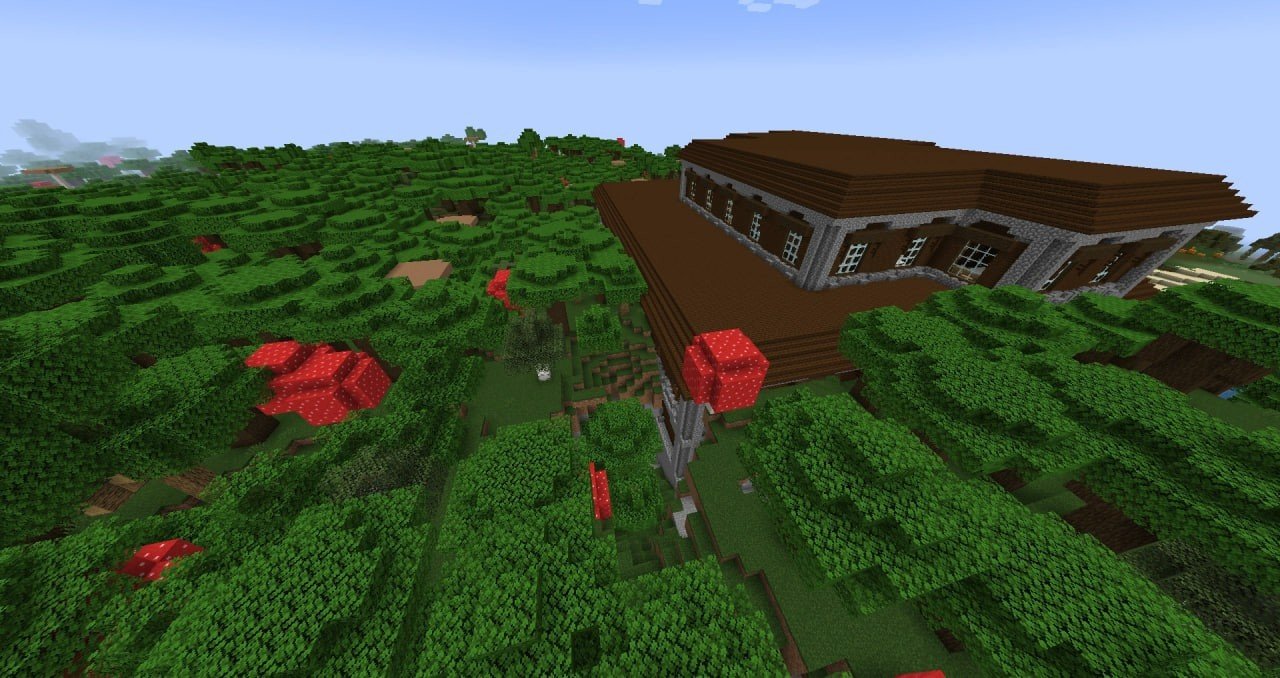 Image: minecraft.fandom.com
Image: minecraft.fandom.com
Our journey leads us to a forest of dark oaks with dense canopies. They block out the sun, meaning hostile mobs inhabit the area even during the day.
Regular trees are also present, though rare. One spark is enough to ignite the dense forest, and fires are not uncommon due to lava lakes.
In the Dark Forest, there are unique structures called Woodland Mansions. Players can find valuable loot inside these mansions. These mysterious structures are guarded by unique enemies: Evokers, Vindicators, Vexes.
Swamp and Mangrove Swamp
 Image: minecraft.wiki
Image: minecraft.wiki
We come across a plain shrouded in mist, covered with water, dark greenery. The swamps are flooded to sea level, and beneath the water, you can find mud, clay, and even fossil remains.
Countless lakes are covered with lily pads, unique to this biome, frogs hop among the tall grass.
While exploring the vine-covered trees, you might stumble upon an old Witch Hut.
The Mangrove Swamp has a warmer climate. The vegetation is denser and lighter, making it more challenging to navigate, build structures. Here, gamers can obtain mangrove wood, leaves, and muddy mangrove roots, which are unique to this area.
Tropical fish may appear in the water, and there are also bee nests.
Jungle
 Image: minecraft.fandom.com
Image: minecraft.fandom.com
Here grow the tallest trees in Minecraft. Trees and even some caves are covered in vines, which you can climb. This can be useful given the varied terrain of the biome.
Among the giant trees, you might come across a Jungle Temple made of mossy stone, often containing loot. Watermelons grow abundantly here, cocoa beans can be found on palm trees.
Unique creatures inhabit this biome. Parrots, for instance, are not only beautiful but also helpful. A tamed parrot will alert you to the approach of hostile mobs.
 Image: minecraft.net
Image: minecraft.net
An ocelot, if fed fish, will follow its owner and scare away creepers.
The jungle has various sub-biomes. The player may encounter Sparse Jungle with shorter and fewer trees or Bamboo Jungle with tall bamboo thickets, podzol ground.
Lukewarm Ocean
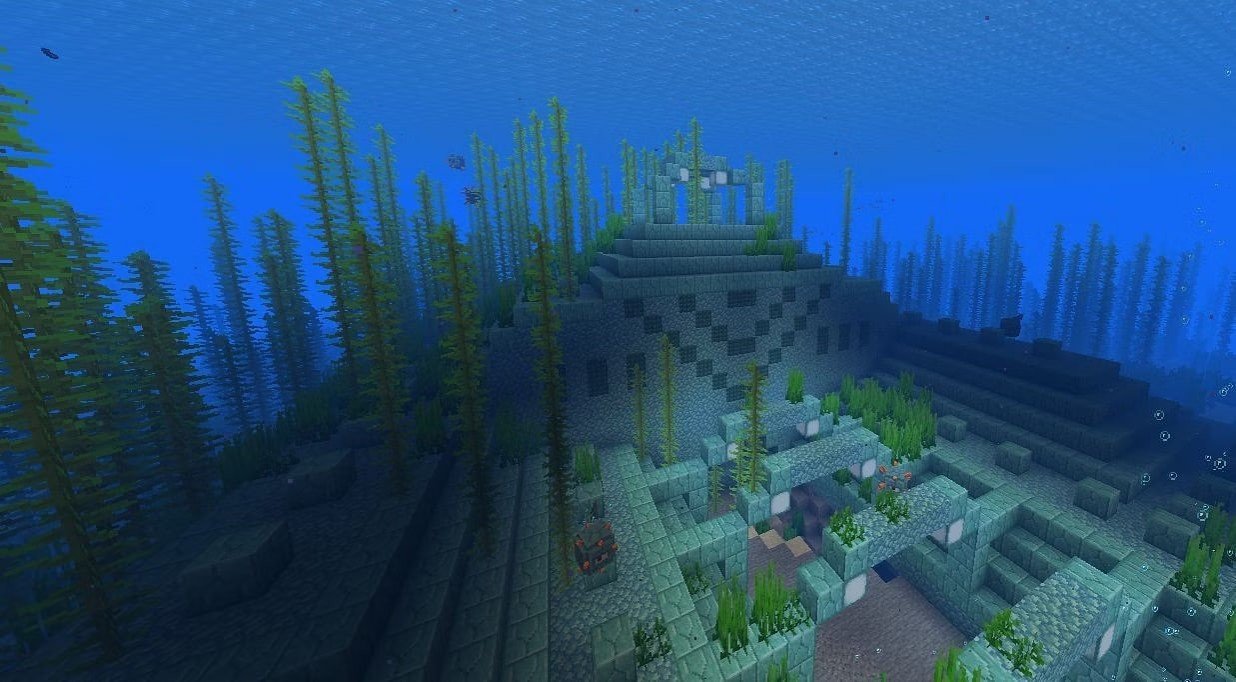 Image: wiki.sportskeeda.com
Image: wiki.sportskeeda.com
After passing the stony peaks, we arrive at the Lukewarm Ocean. The warm waters have a turquoise color and are teeming with life. Now, the user can see seagrass and kelp on the seabed.
The ruins on the seabed are built of sandstone. Besides the familiar marine life, you can catch tropical fish here.
Mushroom Fields
 Image: minecraft.fandom.com
Image: minecraft.fandom.com
Among the different Minecraft biomes, there are Mushroom Fields, which are entirely made of mycelium blocks. Along the shores of these islands, we find eternal resting places and shipwrecks, which often contain treasure.
Such an island is definitely worth finding for its loot. Another advantage is that no hostile mobs spawn in mushroom fields, except for mooshrooms.
Warm Biomes
Traveling further, we feel the temperature rising. The blocks under our feet turn yellow. Hot plains unfold before us.
Desert
 Image: minecraft.fandom.com
Image: minecraft.fandom.com
Almost nothing grows here, only cacti, dry grass. The desert biome in Minecraft is a vast plain. The only elevations for hundreds of blocks will be people, monsters, various structures.
The desert is rich in villages, pillager outposts. These will be the only sources of wood. However, there are also unique places such as the Desert Pyramid + Desert Well.
This is not the best place to settle. There is little food — apart from rabbits, there is nothing else. However, there are many monsters, including a unique new enemy. Husks can move freely under the blazing sun, deal significant damage, and inflict the hunger effect.
Savanna
 Image: minecraft.fandom.com
Image: minecraft.fandom.com
Among the relentless hot sands, we stumble upon a paradise for living. The savannas are covered in tall grass, and unique trees — acacias — grow here.
There is no rain, but when night falls, monsters come out to hunt. Besides the creatures, horses, llamas live here, which you can tame.
There are also villages where you can find temporary shelter.
Savanna Plateau + Windswept Savanna are rarer. These picturesque places might not be the best for settling due to the terrain. The landscape is unpredictable and can quickly transition into mountain ranges or depressions.
Badlands
 Image: minecraft.fandom.com
Image: minecraft.fandom.com
If the sand underfoot turns red + tall hills and mountains appear on the horizon, we are in the Badlands. The biome consists of terracotta and red sand, and little grows here except cacti, dead bushes.
Going here without preparation is very dangerous, but there are reasons to take the risk. In the Badlands, the user can find unique mineshafts made of dark oak. Various undead inhabit them. After dealing with them, you’ll find gold reserves.
In the Wooded Badlands, players will be more comfortable. There are rare sources of water and wood, but it's still not the best place to settle. It doesn't rain, making farming difficult.
Eroded Badlands are very rare, but if you see them, consider yourself lucky. It’s still a poor place to live, but incredibly beautiful.
Warm Ocean
 Image: minecraft.fandom.com
Image: minecraft.fandom.com
Continuing our list of biomes in Minecraft, after traveling through deserts, the sight of the ocean brings delight. The inviting light-green waters hide vast coral reefs.
In the warm ocean, you find unique sea pickles, though kelp does not grow here.
Underground Biomes
We have explored the vast cubic world. We encountered many interesting things, but this is only part of the content. The game is famous for its dungeons. Now we will descend to uncover all the secrets of this world.
Lush Caves
 Image: minecraft.fandom.com
Image: minecraft.fandom.com
Finding a chasm on the surface, we descend into it. Lush caves have unique structures, flora, fauna. The view is beautiful thanks to the numerous azaleas. The fruits of the azalea vines emit light, illuminating the caves. The azalea, unique to this place, grows both on the surface and in the caves themselves.
There is also a unique creature here — the glow squid, which lives in underground water bodies. Additionally, two peaceful creatures live here: the axolotl and the bat. In Lush caves, the player can collect spore blossoms + big dripleaves. Dungeons, strongholds, amethyst geodes are also found here.
Dripstone Caves
 Image: sportskeeda.com
Image: sportskeeda.com
In another chasm, we find a path into the Dripstone caves. These caves are common and do not have unique plants, but there are many pointed dripstone and corresponding blocks. Drowned can be found in the underground water bodies.
Players should explore here for the abundant copper deposits.
Deep Dark
 Image: minecraft.fandom.com
Image: minecraft.fandom.com
If you dig deep down beneath mountains, you can reach the Deep Dark. This biome is rare outside of mountain ranges. It is truly a unique place.
Bring torches. All the caves in this type consist of dark sculk blocks and are dotted with sculk veins, sculk sensors, sculk shriekers, and sculk catalysts, emitting dim light. Exploring the Deep Dark, we realize that much here is of human origin. When the Ancient City appears before us, there is no doubt about it.
Silence reigns in the Deep Dark, and not even the rustle of bats can be heard. But the only creature here, the Warden, watches us.
The Nether
Under the layer of stone lies a world so horrifying that without preparation, a player faces certain death. To reach the Nether, the player needs to build a portal. We construct a frame of obsidian 4x5 blocks and ignite it with flint and steel. Then we step into the unknown.
Nether Wastes
 Image: minecraft.fandom.com
Image: minecraft.fandom.com
We find ourselves in a barren blazing biome filled with lava. Nether Wastes consist of magma blocks, blackstone, gravel, glowstone.
There is still life here. Skeletons, zombies, and even creepers seem friendly compared to the inhabitants of this hell. Prepare to meet piglins, zombified piglins, magma cubes, endermen, striders.
Among the seas and flows of lava, we can see ancient Bastion Remnants and the walls of Nether fortresses, where loot can be found. If you dare to come here for good supplies of quartz ore, gold, be sure to bring buckets of water to douse the lava flows.
Basalt Deltas
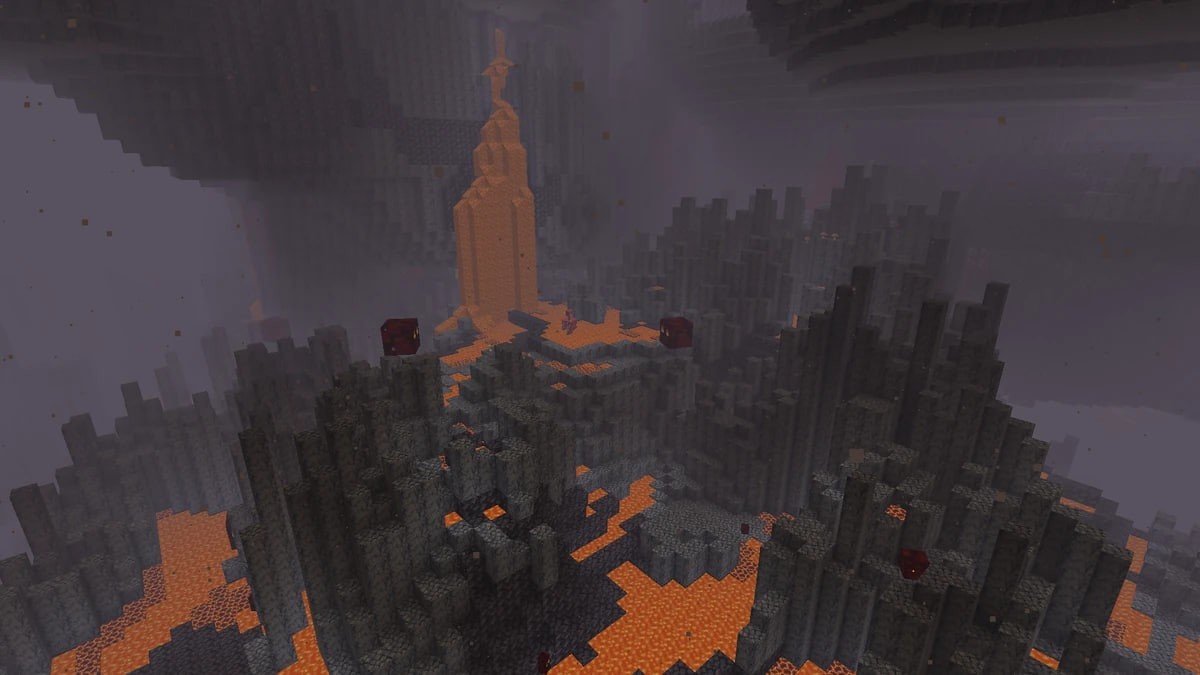 Image: minecraft.fandom.com
Image: minecraft.fandom.com
This biome is shrouded in an ashy haze, and it is more dangerous for the player than the Nether Wastes. Before us stretches a multitude of sharp basalt spires, floating islands. One wrong step, and a fall into the lava rivers will be long, deadly. There are no useful ores here, so the only spoils will be decorative blocks like glowstone, blackstone.
Our path will be blocked by magma cubes, ghasts, which can easily knock us into the lava with a single hit. Striders will help the player cross the lava flows.
Warped Forest
 Image: minecraft.fandom.com
Image: minecraft.fandom.com
It's hard to imagine that there is life in the Nether. Under the thick earth grows a whole forest of huge warped fungi, densely packed together. Underfoot is soft warped nylium, nether sprouts, warped roots. The cave walls are made of netherrack. You can also collect the glowing block shroomlight here. Among the living creatures, we encountered striders, endermen.
Crimson Forest
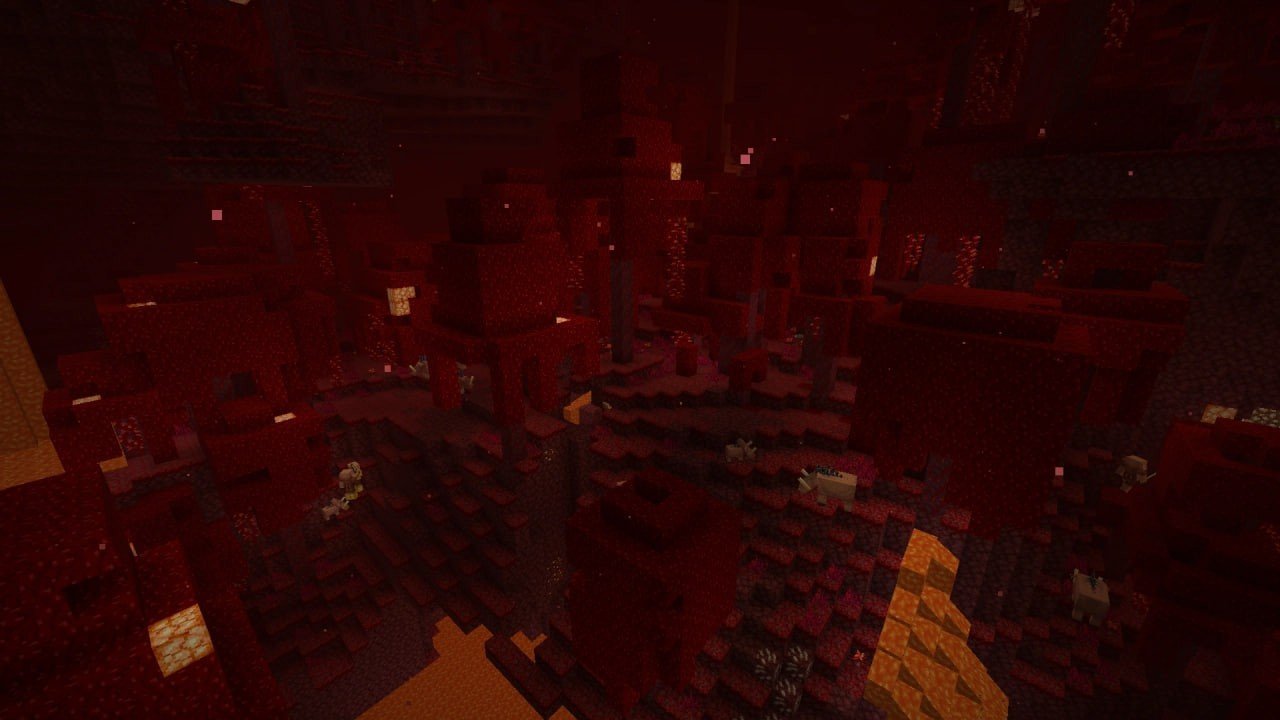 Image: minecraft.fandom.com
Image: minecraft.fandom.com
Crimson Forest is considered one of the most dangerous biomes. Huge fungi also grow here, but the foliage and all the blocks are dark crimson. This place has more enemies, the most dangerous of which is the hoglin. Striders, zombified piglins, and regular piglins, with whom you can even trade, also inhabit this area.
Soul Sand Valley
 Image: minecraft.fandom.com
Image: minecraft.fandom.com
We have reached one of the most dangerous and eerie places in Minecraft. Before us is a huge grotto filled with thick, murky fog. Almost the entire surface here is covered with soul sand, soul soil.
To come here, we had to gather a set of good armor + acquire ranged weapons. It's fortunate we have enchanted "Soul Speed" on our boots because the sand significantly slows down movement. Ghasts will try to ignite the soil. If we catch fire, we take enormous damage. If we step on the sand and lose speed, skeletons will rain arrows down on us.
But it is here that we’ll find the largest deposits of ancient, nether fossils, bone meal, and various treasure chests. There is indeed a lot of loot here.
The End
 Image: minecraft-archive.fandom.com
Image: minecraft-archive.fandom.com
We have come a long way and explored the entire Minecraft world. But there is still one unfinished task. There is a place beyond the physical world, surrounded by many legends. It is called The End.
Portal
 Image: rockpapershotgun.com
Image: rockpapershotgun.com
We'll need to find the entrance. We must have an Eye of Ender with us — preferably more than 12. Throwing the Eye of Ender, we'll see the path to the nearest stronghold containing the Portal. It consists of 12 frames, and lava burns in the center. Silverfish appear on the pedestal. No matter how many we kill, they keep coming, preventing us from activating the Portal. Carefully examine the Portal and find their Monster spawner nearby.
Once the Monster spawner is destroyed, we can activate the portal. Place the Eyes of Ender in the empty frames, and it’ll work. All that's left is to jump in.
Small End Islands
 Image: pixelmon.site
Image: pixelmon.site
In the endless void, islands made of end stone + obsidian float. The distance between the islands reaches 1000 blocks. We don't yet know how to get there.
The island we appeared on is the largest. Using a compass won't help: the needle spins wildly, just like a clock. If the transition to The End has tired you, don't rush to build a bed and lie down. As soon as you do, the bed will explode, causing more damage than dynamite.
Our attention is drawn away from the compass by the huge shadow of a dragon. It circles around tall obsidian pillars, and there is no escaping this creature.
 Image: minecraft-archive.fandom.com
Image: minecraft-archive.fandom.com
A well-aimed arrow hits the dragon, but the crystals on the obsidian pillars heal the monster. We will have to destroy them first. After a long battle, the dragon will be defeated. At the site of the creature's death, we receive a dragon egg and a lot of experience. A portal to The Overworld appears right there in the air.
Let's not rush to leave. A new portal has appeared on the edge of the island, very small — only one block in size. The character can enter it using an ender pearl or by pouring water and swimming through the portal. It leads us to the Far Lands.
There we encounter wardens, unique structures. Along the way, we will find End City and its shulkers, the End City ship, chorus flowers.
Gathering everything we need, we return to The Overworld, to our cozy home in the meadows. This was a great and unforgettable journey. How many Minecraft biomes are there? Enough to embark on a long, interesting adventure.
Main image by Ensigame


 Alex "Raoom" Sukhanov
Alex "Raoom" Sukhanov







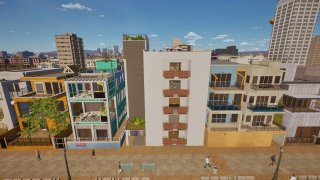

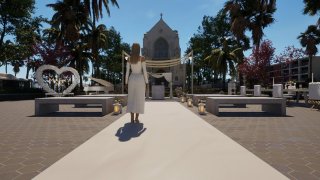


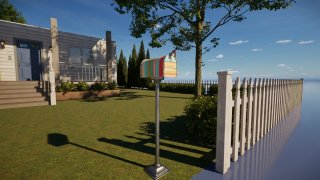




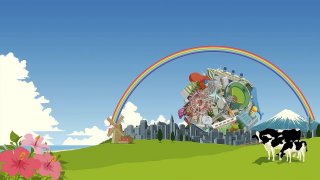
0 comments